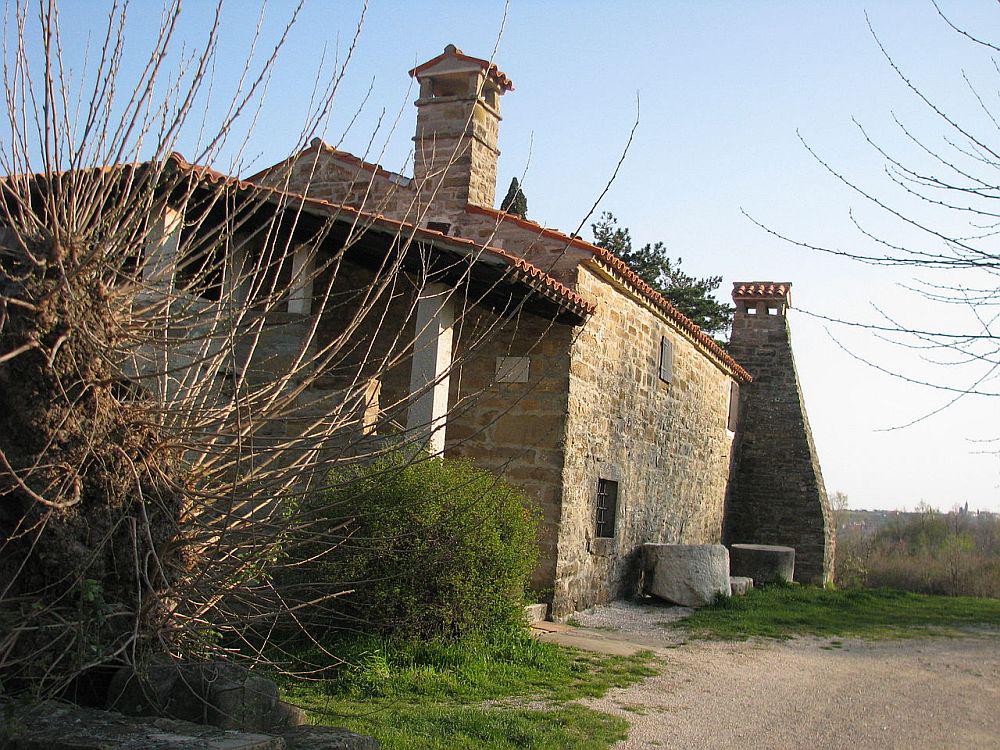Not far from the bustling resorts of Slovenia's Adriatic Coast, in the small village of Sveti Peter, a modest stone house gives visitors a chance to see how locals had lived for centuries – long before the introduction of tourism to the area.
In 1979, an old house was restored to its former appearance and is now run under the auspices of a local museum as Tona's House (“Tonina hiša”). Its architecture reflects the environment of the Slovenian coast. Its thick stone walls provide protection from both the sun and the howling bora winds. Stone has long been the primary building material in this part of the country, and Tona's House is graced with intricately carved stone windows and a covered with characteristic stone shingles.
As was often the case in this part of Slovenia, its residents made their living from olive oil, and Tona's House includes a fully fledged olive press preserved in its original condition. The setup includes both a mill used to grind the olives and the press itself, where oil was squeezed out of the olive mush. The production of olive oil brought a high standard of living to the occupants of the house, which now serves as an example of a prosperous home in Slovenia's Adriatic hinterland.
In contrast, the Karst House in the Slovenian village of Repen in Italy -- also preserved and open to the public -- is an example of a more modest traditional home. Renovated in the 1980's with the help of local villagers who donated their objects, the house provides insight into the traditional way of life on the Karst, a plateau that rises high above the Adriatic Sea.
Also made of stone, the Karst House features a large well – a welcome feature in this dry region. The bora winds are even stronger here, and a typical courtyard provides some shelter from their relentless howling. The Karst has long been a wine-growing region, and the house is equipped with a wine cellar. Visitors can also tour the traditional kitchen, the bedrooms with mattresses made out of corn husks, and the granary, which doubled as a place where children often slept.
Both preserved homes serve as reminders of the age-old architectural practices shaped by the elements – the wind, the sea, the sun, and the stone – that have come to define the part of Slovenia where the land meets the sea.


































































